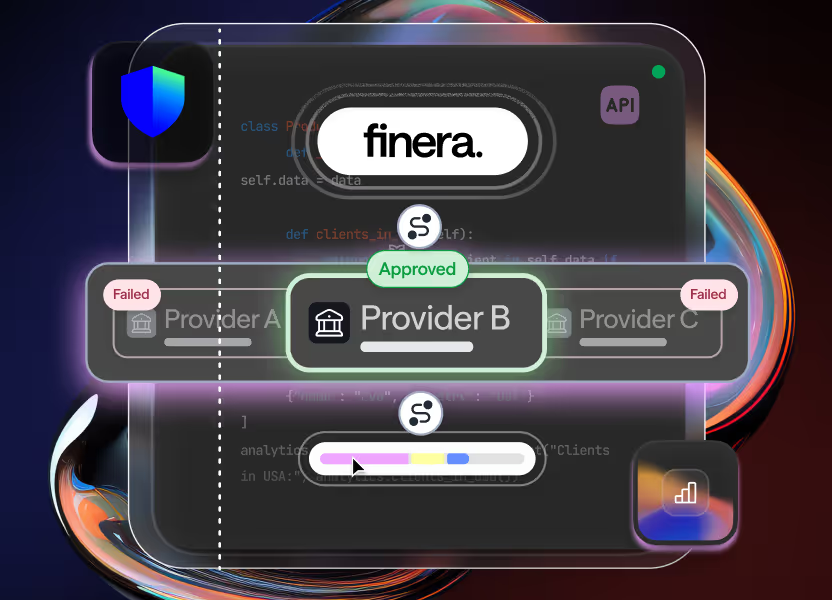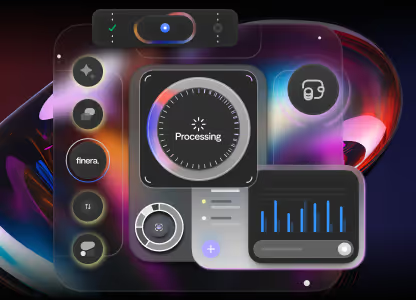Payment Orchestration 101 for CTOs and Product Managers
Discover how CTOs use payment orchestration to scale globally, optimise routing and cut costs.

Given how quickly the payments landscape is changing, CTOs and product teams are under pressure to create infrastructure that is not only scalable but also flexible, safe and performance-optimised. Managing payments is no longer a simple back-end function but a strategic growth lever that affects everything from conversion rates to customer retention and global expansion.
This is the reason why more technical leaders are asking: Does my business need a payment orchestration platform to stay competitive?
This payment orchestration guide for CTOs and product managers explores its importance for modern technology teams and how to approach it as an infrastructure investment, not just a payment integration.
Why Payment Orchestration Matters to CTOs and Product Managers
For CTOs managing complex tech stacks and for product leads responsible for delivering seamless user experiences, payments are now a mission-critical part of the architecture.
The average eCommerce business operates in multiple regions, uses at least two PSPs, and offers a variety of local and global payment methods. Without a way to intelligently manage these integrations, companies face:
- Unnecessary transaction declines
- Latency issues at checkout
- Fragile, siloed PSP connections
- Difficulty scaling across borders
- Higher total cost of ownership
Smart Routing: The Engine Behind Better Conversion Rates
One of the most powerful features of orchestration is smart routing. Rather than sending every transaction through a single PSP, smart routing analyses each payment request in real time and routes it to the provider most likely to approve it.
This decision can be based on card type, issuer location, currency, past success rates, or even time of day.
For example, if a UK-issued card typically sees more declines through PSP A but performs better with PSP B, the orchestration platform automatically adjusts. This can increase approval rates by up to 6%, according to insights from PaymentsJournal and industry benchmarks.
For CTOs, this means fewer false declines, higher revenue capture, and less pressure on customer support teams handling payment failures.
Resilience Through Real-Time Failover
No PSP offers perfect uptime. That’s why orchestrators include failover logic, allowing you to reroute payments instantly if your primary provider is down or experiencing issues.
This is essential for platforms with high-volume checkouts, subscription renewals, or global events like flash sales. A failover strategy ensures continuity and protects revenue.
From a technical perspective, real-time failover adds redundancy to your payment stack without the complexity of writing and maintaining fallback logic for each PSP.
Does My Business Need a Payment Orchestration Platform Capability?
This is one of the most common questions raised by product and technology teams evaluating how to future-proof their payments infrastructure.
Here are signs that your business is ready or overdue for a payment orchestration platform:
- You operate in multiple markets and must support different currencies and payment methods
- You have experienced unexpected outages or declines from your payment providers
- Your engineering team is spending significant time maintaining PSP integrations
- You want more control over routing logic, fee optimisation, or reporting
- You plan to expand into new regions within the next 12–18 months
- You lack visibility into why payments fail and how to fix them
If even one or two of these apply, the answer to “Does my business need a payment orchestration platform support?” is likely a yes.
“Every transaction is an opportunity, payment orchestration turns it into higher approval rates, smarter decisions, and measurable growth.” – Stefania Radu, Head of Product at finera.
Beyond the Payment Gateway: Why One PSP Isn’t Enough
It’s tempting to use a single PSP, especially in early-stage products. But this can create a single point of failure, limited payment acceptance, and higher processing costs.
Different PSPs perform better in different regions. Some support local wallets, some don’t. Others excel at handling recurring payments or fraud prevention.
An orchestration layer lets you combine the strengths of multiple providers and tools, giving your product and engineering teams control over every aspect of the payment journey, without rebuilding your stack every time you expand.
Better Data, Better Decisions
One challenge many CTOs face is limited visibility. When working with a PSP directly, you often rely on their dashboards and reporting, which might not align with your internal metrics or data pipelines.
Orchestration platforms provide unified analytics and normalised data across providers, giving your team clear insights into:
- Authorisation rates by provider and geography
- Decline reasons and retry performance
- Routing efficiency and fee structures
- Local payment method success rates
This data is critical for product teams iterating on checkout flows or building internal dashboards to support business intelligence and operations.
Engineering Agility at Scale
The integration layer between payments and your backend systems is often one of the most brittle and time-consuming to maintain. With orchestration, engineering teams gain:
- A single, flexible API to manage multiple PSPs
- Pre-built connectors for dozens of payment methods
- Built-in support for local APMs and open banking
- Quicker onboarding of new methods or markets
This frees up development time and enables faster iterations, especially when entering new markets or A/B testing checkout flows.
Security, Compliance, and Risk Mitigation
For CTOs managing compliance and security, orchestration platforms offer PCI DSS Level 1 compliance, tokenisation, 3DS support and fraud tool integrations.
Instead of implementing these from scratch or juggling multiple vendor certifications, orchestration gives you built-in governance tools that scale with your business.
“Our platform connects you to a wide range of payment methods, including local APMs, helping you dramatically increase your payment conversion rates.” – Ilya Badaev, CTO at finera.
Final Thoughts: A Strategic Foundation, Not Just a Feature
For technical leaders, adopting a payment orchestration layer is not a one-off feature, it’s an infrastructure decision. One that delivers resilience, agility, and clarity as your product and business grow. A well-implemented orchestration strategy ensures you're in control and not at the mercy of third-party limitations.
Build Smarter Payments with Finera
At Finera, businesses simplify complex payments through a modular, secure and developer-friendly payment ecosystem. Our solutions include multi-currency flows, smart routing and seamless integration with APMs, acquirers, open banking and fraud prevention tools, giving you everything you need to optimise payments without compromising engineering focus.
"We manage the complexity of the constantly evolving payments ecosystem, turning it into a competitive advantage for our clients." – Artur Salve, Chief Product Officer at finera.
Talk to our team today to explore how orchestration can support your growth roadmap.
This article on payment methods is for informational and educational purposes only.
- Not Professional Advice: The content provided does not constitute financial, legal, tax, or professional advice. Always consult with a qualified professional before making financial decisions.
- No Liability: The authors, contributors, and the publisher assume no liability for any loss, damage, or consequence whatsoever, whether direct or indirect, resulting from your reliance on or use of the information contained herein.
- Third-Party Risk: The discussion of specific payment services, platforms, or institutions is for illustration only. We do not endorse or guarantee the performance, security, or policies of any third-party service mentioned. Use all third-party services at your own risk.
- No Warranty: We make no warranty regarding the accuracy, completeness, or suitability of the information, which may become outdated over time.
Frequently Asked Questions

Still Have Questions?
Let’s Find the Right Solution for You
Stay Connected with Us!
Follow us on social media to stay up to date with the latest news, updates, and exclusive insights!





.avif)


